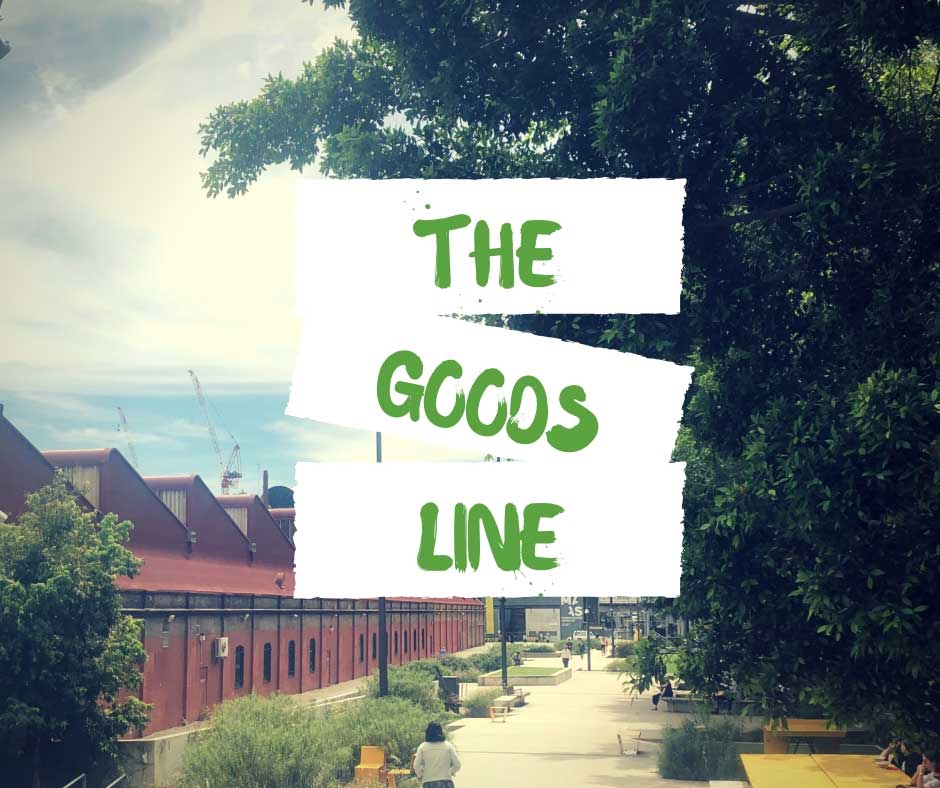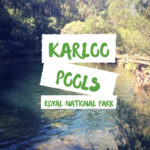The Goods Line, Sydney, is urban renewal at its best. Transforming a long-abandoned freight railway line into green space, this formerly dead part of town now draws city workers outside and creates an attractive walkway between Central Station and Darling Harbour.
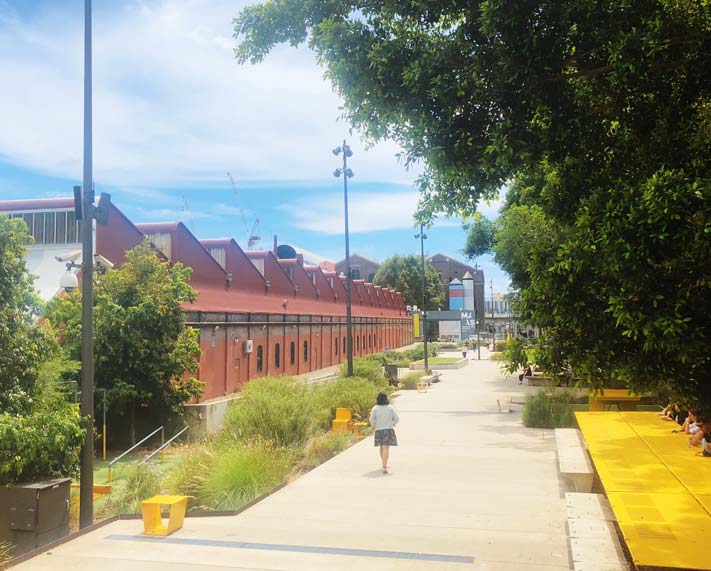
For years there was nothing here. So even for a local – especially for locals – it’s an amazing transformation.
And for visitors, feel free to take for granted how green it all is, how many cool cafes are nearby, how you can stroll past Frank Gehry-designed buildings as if, like, all of Sydney is this green and open and cool.
Highlights of the The Goods Line, Sydney
- Impressive architecturally designed university building
- Historic Mary Ann Street Culvert
- Urban renewal done right
Distance
0.5km or 0.3 miles
Walk Time
Approximately 6 minutes
How Hard is the The Goods Line Walk?
Difficulty
Grade 1: no bushwalking experience required. Flat even surface with no steep sections. Stairs at one end, with alternate ramp access.
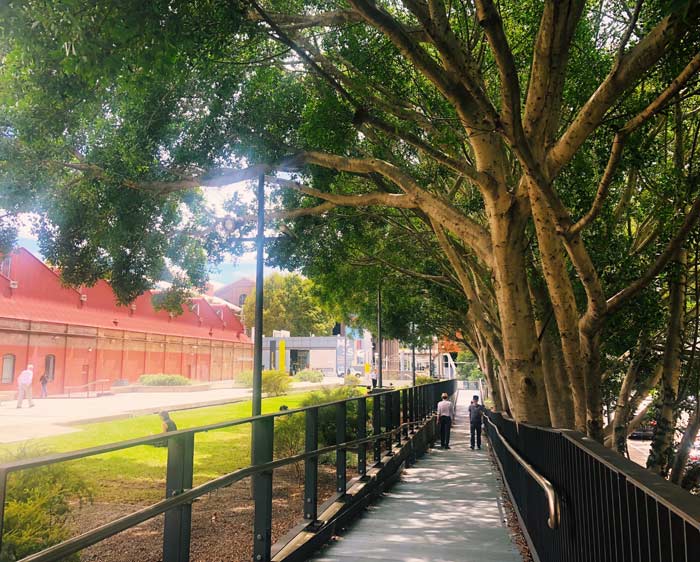
Track Conditions
Paved walkway with limited signage.
Quick Start Guide
Public Transport
Designed as a pedestrian walkway between Central Station and Darling Harbour, access to the Goods Line is well serviced by trains and buses.
Water
No drinking fountains available. For the nearest, try the City of Sydney’s map of water bubblers.
Toilets
There are public toilets at either end of the walk, found within Central Station and at Darling Harbour.
Mobile Phone Reception
This is an urban walkway in the centre of the city, so has reliable mobile phone / cell reception.
The Goods Line Route
The Goods Line can be walked in either direction. Try starting at Central Station in order to spend more time at Darling Harbour, the destination.
Alternatively, use The Goods Line to scoot back to Central after a day at Darling Harbour.
The Central Station end is fairly unimaginative. Railway lines embedded in the concrete at your feet are the only indication you’re walking on a former freight rail line that first opened in 1855.
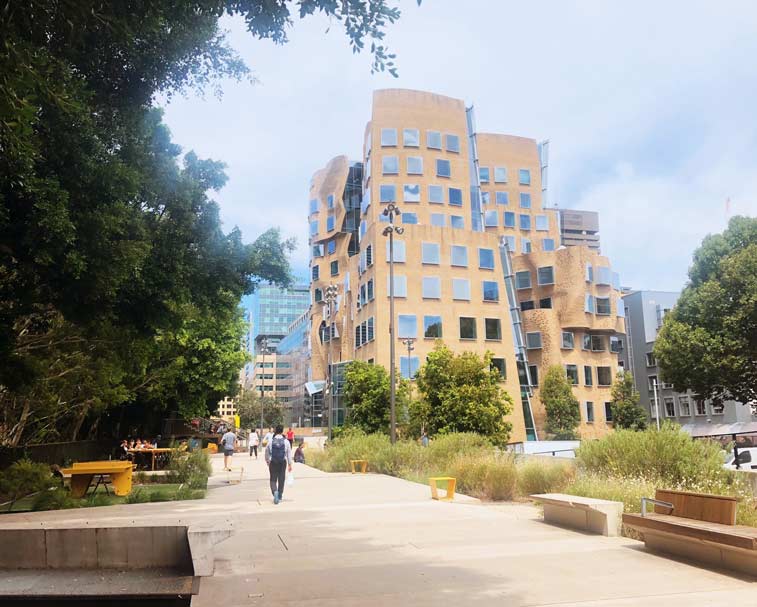
However, walking across the railway bridge reveals its promise of purposefully designed public space. Fig trees provide shade over ‘study pods’ cantilevered over the street below. There are ping pong tables (bring your own bat and ball), bright yellow communal tables and an informal amphitheatre space.
The Frank Gehry UTS Building
Standing over the space is a striking building often described as a “crumpled paper bag”. It’s the Business School of the University of Technology Sydney. Officially titled the Dr Chau Chak Wing Building after its major donor ($20 million, thank you very much), it’s designed by renowned US architect Frank Gehry. It’s the first Gehry-designed building in Australia. You should see the quick hand-drawn sketch of Gehry’s first imaginings of this unique building.
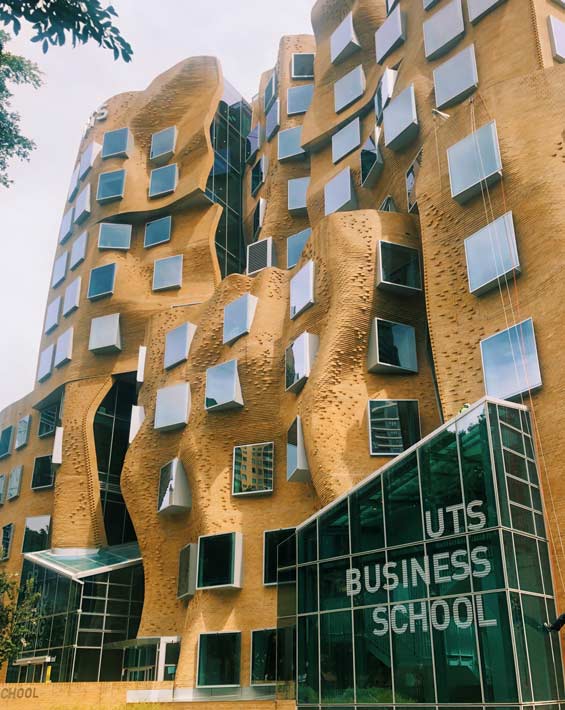
Mary Ann Street Culvert
The Goods Line blends heritage and former industrial uses in its design. An 1853 sandstone culvert found during work on a nearby cable tunnel was re-erected along the walkway.
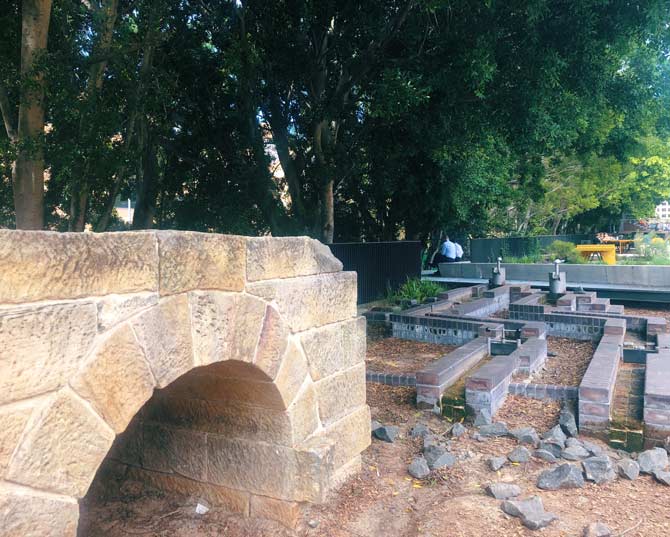
There is also an old railway signal box and interlocking machine.
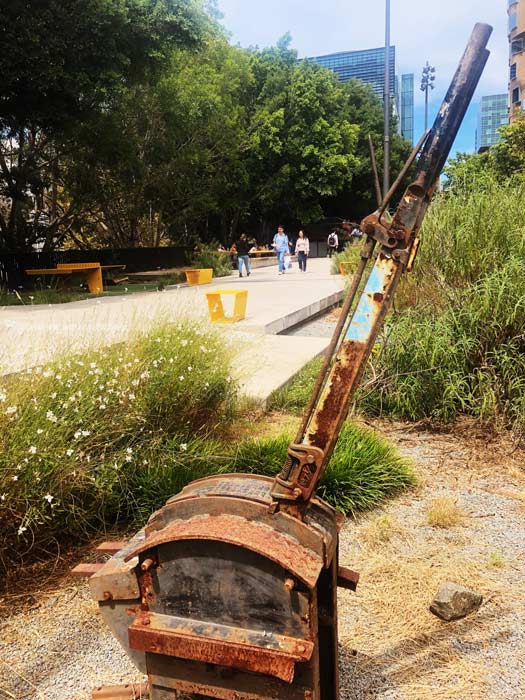
Where to Start Walking?
It’s easy to say, “start from Central Station”. But like other cities’ main train hub, Central Station is big.
From within the station, aim for the Devonshire Street Pedestrian Tunnel. See more details under Public Transport below.
At the Central Station end, the walk starts at the Lee Street end of the Devonshire Street Tunnel. If you’re not coming from within the train station, start from the end of Thomas Street (near the Novotel Sydney Central).
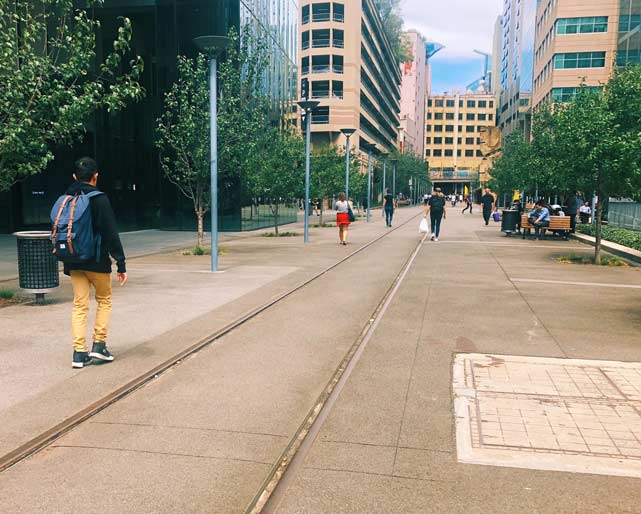
If you’re at the Darling Harbour end, head for the southern end of the International Convention Centre (ICC) and the Chinese Garden of Friendship, and keep walking. It’s nicer to then turn right into Steel Mill Lane, then left on to Darling Drive briefly. The Goods Line starts across the road.
Getting to The Goods Line
Being in the centre of the city, parking can be expensive and traffic tricky. Conversely, it’s easy via train or bus from Sydney’s centre and surrounds.
Public Transport
If you catch a train, the Devonshire Street Tunnel can be found via the Southern Concourse, right near the escalators to the blue Illawarra Line (Cronulla / Bondi Junction). (Or from street level: Chalmers Street).
Walk to what feels like the end of the pedestrian tunnel, where it opens up to the bus interchange. Don’t go up to street level; keep going to the tunnel’s actual end. You’ll pop out looking at the back of a UTS uni building.
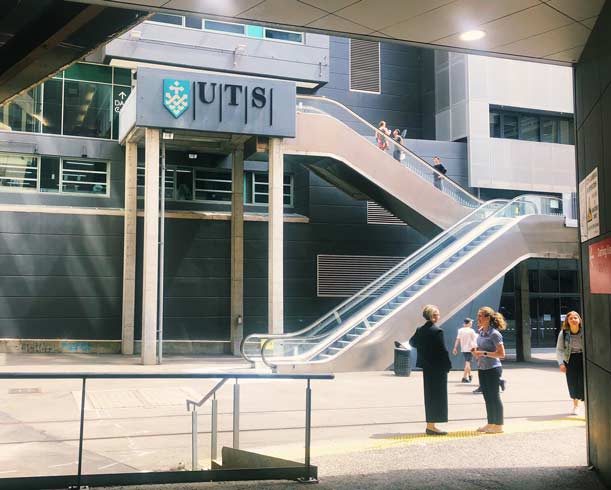
From here, there’s no other way to go except to turn right. Looking down, you’ll see old railway tracks in the concrete. This is the start of the Goods Line.
If you’re in the city itself, a bus may be better. Get off at Railway Square. Make sure you go below street level (on the [eastern] Central station side of the road) to join the very end of the pedestrian underpass (heading away from Central Station).
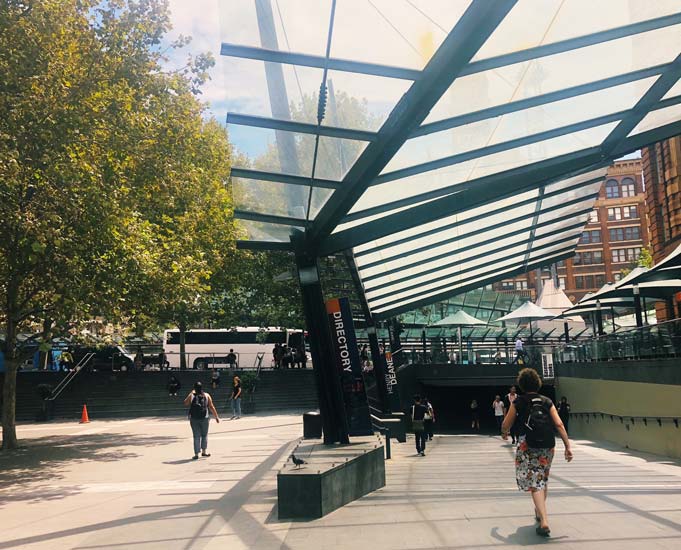
You’ll see the back of a UTS uni building. Turn right and keep walking because you’re now on The Goods Line.
Parking
There’s a private parking station on Thomas Street near Novotel Sydney Central. Come out of the parking station, turn left as if you’re going to walk into the back entry of the ABC, then turn right to the pedestrian walkway that is The Goods Line.
There are plenty more parking stations around Darling Harbour. Do a quick internet search. There are often weekend deals, and it’s often cheaper to park all day (arriving and leaving between set times) than to park for a few hours in the middle of the day.
The Goods Line Map
Best Places to Eat Near The Goods Line Sydney
Wedged between Chinatown and Darling Harbour, there are so many places to eat it may be hard to decide.
But to keep close to The Goods Line – and the spirit of “I didn’t know Sydney had this space!” – try Steel Mill Lane, part of the emerging Darling Square.
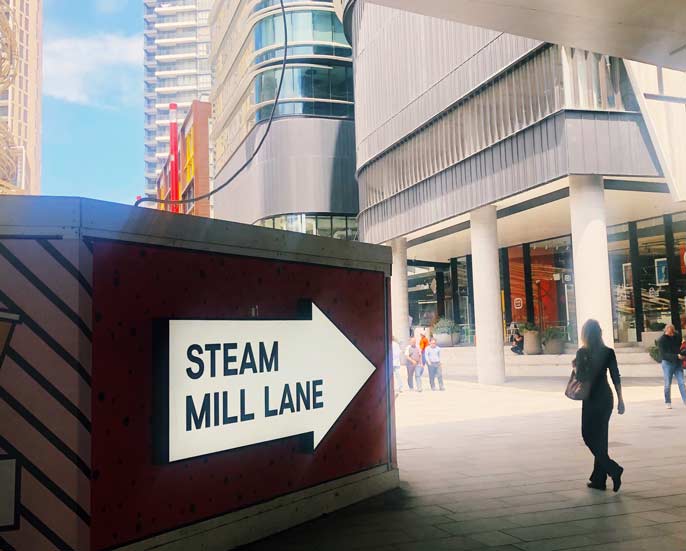
You could also try the Powerhouse Museum's cafe, especially if you want to grab takeaway to plonk yourself down on some of The Goods Line's grassy areas. The cafe overlooks the walkway.
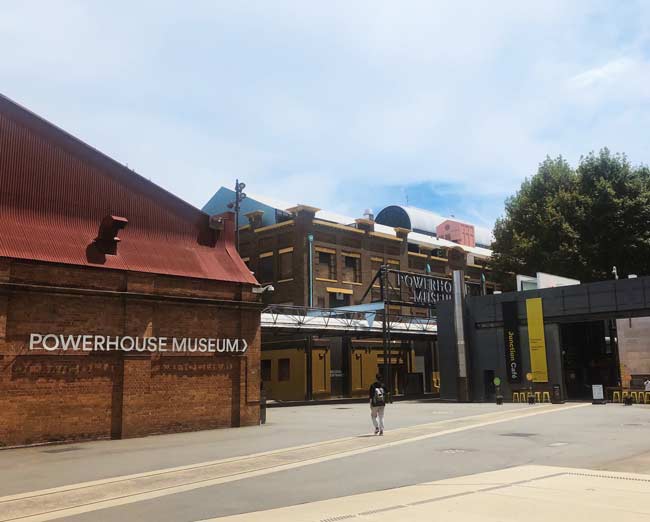
Now that you've done the The Goods Line Walk, you may also be interested in…
- Discover more of the city's green spaces and iconic sights on the Sydney City Walk.

